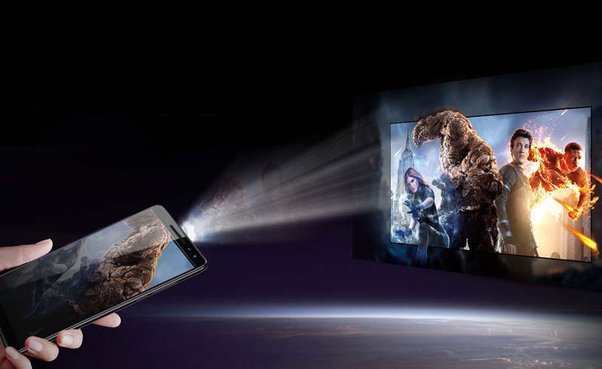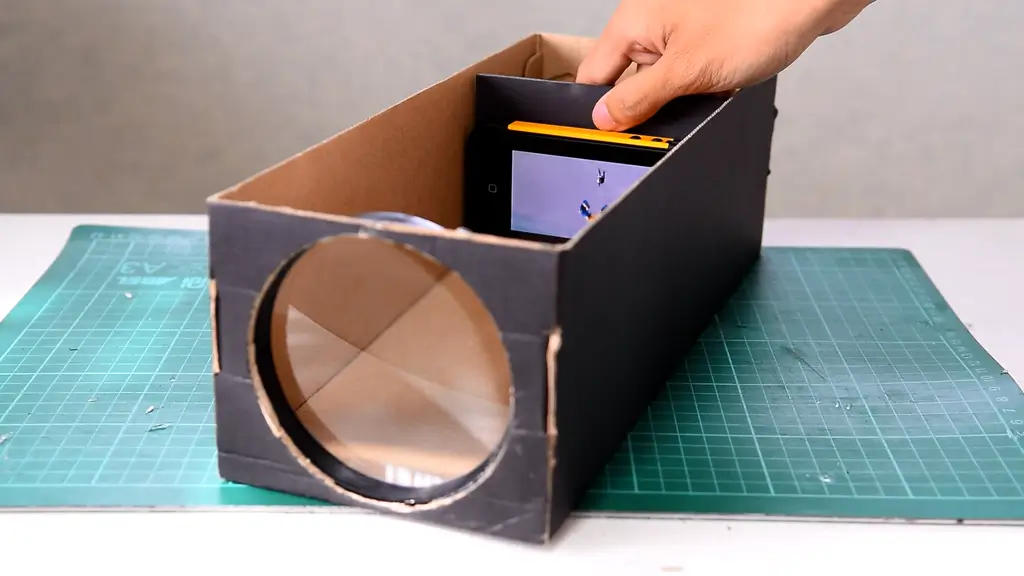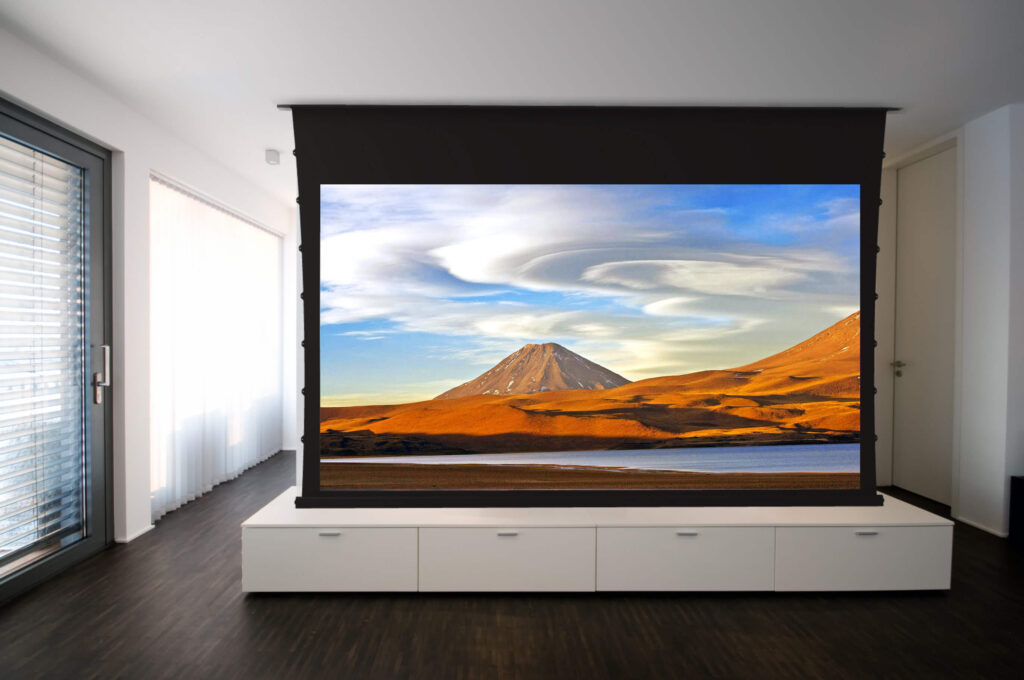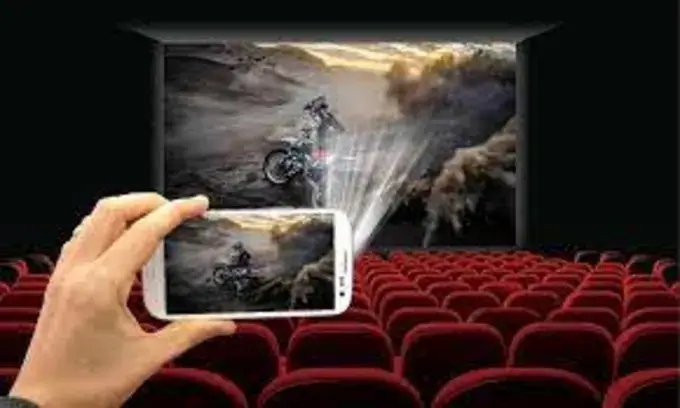Mobile devices have emerged as our primary source of entertainment and information in the current digital era. However, there are instances when you would prefer a more immersive experience or to share the content from your smartphone device with a bigger audience.
Even though projectors are frequently used for this, not everyone can access them. Be at ease, though! Using different techniques without a conventional projector, you can project your mobile screen onto a wall.

In this article, we will explore some creative solutions to help you achieve how to project mobile screen on wall without projector and make the most of your mobile device’s screen.
If you find yourself without a projector but still want to project your mobile screen onto a wall, there are alternative methods you can explore.
Here are three popular options Project Mobile Screen On Wall Without Projector:
1. Using a TV or Monitor:
Most modern TVs and monitors have screen-mirroring or casting features that let you wirelessly project your smartphone’s screen onto a larger surface. Take these actions:
Step No 1:
Make sure your mobile device is linked to the same Wi-Fi network as your TV or monitor.
Step No 2:
Find the screen mirroring or casting option in the settings on your mobile device (the location will change based on your device).
Step No 3:
From the list of supported devices, pick your TV or monitor.
Step No 4:
Once connected, your mobile device’s screen will be virtually projected onto the wall by being reflected on the TV or monitor. To maximize the projection’s size and quality, adjust the display settings on the TV or monitor.
2. Using a Streaming Device:
Your mobile device’s screen can be projected onto a wall using a streaming device like Chromecast, Apple TV, or Roku. This is how:
Step No 1:
Connect your TV or projector to the streaming device.
Step No 2:
Follow the instructions to set up and configure the streaming device.
Step No 3:
Download the matching app for the streaming device on your mobile device (such as Google Home for Chromecast).
Step No 4:
To connect your smartphone to the streaming device, open the app and follow the on-screen directions.
Step No 5:
Once connected, you may efficiently project your mobile device’s screen onto the wall by casting it on the TV or projector.
3. DIY Smartphone Projectors:

You may be wondering how to project mobile screen on wall without projector, then here is a straightforward DIY setup out of a box and a mirror to project your smartphone screen onto the wall. This is how:
Gather the materials:
Cardboard box: Pick a strong cardboard box that is big enough to hold your smartphone.
Magnifying mirror: Purchase a magnifying mirror online or at beauty supply stores.
Prepare the box:
Step No 1:
Cut a rectangular hole in the box’s side, leaving a few-inch margin around the borders.
Step No 2:
Make sure the hole is smaller than the screen size of your smartphone.
Attach the mirror:
Step No 1:
Place the magnifying mirror so that it completely encloses the rectangular hole.
Step No 2:
Ensure the mirror is flat and properly positioned, and attach it using strong tape or adhesive.
Set up the projection:
Step No 1:
Locate a dimly lit space, then place the box towards the wall to which you want to project the image in a solid posture.
Step No 2:
With the screen towards the mirror, place your smartphone within the box.
Adjust the focus and distance:
Step No 1:
Once the projected image on the wall is seen and in focus, move the mobile device back and forth inside the box.
Step No 2:
Experiment with the box’s distance from the wall to get the correct image size.
Play content:
Play the desired app or content by opening it on your mobile device. The image from the screen will be magnified and projected onto the wall by the magnifying mirror.
What Is An Alternative To a Projector Screen?

You should consider several solutions if a projector screen is not what you need. Here are some substitutes:
Blank White Wall:
Using plain white is among the most accessible and practical substitutes for a projector screen. Pick a smooth wall devoid of any textures or patterns that can cause the projected image to be distorted.
Although it might not give the same degree of image clarity and color accuracy as a dedicated projector screen, a white wall can serve as a respectable projection surface.
White Sheet or Fabric:
A white sheet or piece of fabric can also be used as a temporary projection surface. Make sure the cloth is as flat and wrinkle-free as possible by stretching it taut across a frame or hanging it on the wall. This practical and portable approach makes it appropriate for impromptu setups or outdoor projections.
Projector Screen Paint:
Specialized projector screen paint is available in the market, which can transform any smooth wall into a projection surface. These paints are made to improve images’ brightness, contrast, and image quality, giving viewers a more engaging viewing experience. To apply the paint correctly and obtain the best results, abide by the manufacturer’s recommendations.
Portable Projection Screens:
Portable projection screens are a terrific option for a more expert solution. These screens come in various shapes and sizes, including tripod, pull-down, and inflatable screens, and are made expressly for projector use. Compared to temporary substitutes, portable screens are more convenient and have superior image quality.
Retractable Blinds or Shades:
In some circumstances, you can project onto the surface closest to the window using retractable blinds or shades. The image is projected onto the surface by rolling up the blinds or raising the shadows, placing the projector close to the window. This technique, which uses daylight to generate a more comprehensive show, can be effective for daytime projections.
Considerations for choosing an alternative to a projector screen include image quality, portability, price, and the particular needs of your arrangement. Try many possibilities to determine which best meets your requirements and offers a satisfying viewing experience.
How Do I Project My Android To My Wall?

If you are worried about how to project mobile screen on wall without projector, then you don’t need to worry at all. There are a few approaches you can attempt if you want to project your Android device onto a wall. To protect your Android screen from a wall, use one of the following methods:
Wireless Screen Mirroring:
Most Android devices include built-in screen mirroring features that let you wirelessly mirror your device’s screen onto a compatible display, like a TV or projector. This is how you do it:
- Ensure your Android device is linked to the same Wi-Fi network as the target display (TV or projector).
- Locate the “Screen mirroring” or “Cast screen” option in the Settings menu on your Android device. Depending on your device’s maker and Android version, the precise location could change.
- Select the target display from the available devices by tapping the screen mirroring option.
- After being connected, the screen of your Android device will be virtually projected onto the wall by being mirrored on the TV or projector.
Use a Wireless HDMI Adapter:
Another choice is to project your Android screen onto a wall using a wireless HDMI converter like Chromecast or Miracast. Here’s how to configure it:
- Join the wireless HDMI adapter to the display or projector’s port.
- Verify that the adapter and Android device are logged into the same Wi-Fi network.
- Download the relevant Android app for the wireless HDMI adapter, such as Google Home for Chromecast.
- To connect your Android device to the wireless HDMI adapter, open the app and follow the on-screen directions.
- After establishing a connection, you can project your Android screen onto a wall by casting it onto a display or projector.
Use a USB-to-HDMI Cable:
If your Android device can output video over USB, you can use a USB-to-HDMI adapter to connect it straight to an HDMI-enabled projector or television. What you must do is as follows:
- A USB-to-HDMI cable for your Android device should be purchased.
- Attach one end of the cable to the USB port on your Android device.
- Attach the cable’s other end to the HDMI input port on the TV or projector.
- After you’ve connected, change the TV or projector to the HDMI input source that goes with the cable connection.
- The Android device’s screen should now be displayed on the wall via the projector or TV.
You can easily project your Android screen onto a wall using one of these techniques without a conventional projector. For a more immersive experience, enjoy sharing content, viewing movies, or playing games on a larger display.
Conclusion:
Besides the usual and straightforward projector technique, there are several ways How To Project Mobile Screen On Wall without Projector. You may still experience a larger screen without a dedicated projector by employing options like screen mirroring on a TV or monitor, using streaming devices, or even building a DIY smartphone projector.
It’s crucial to investigate and test different approaches to see which suits your setup and preferences the best because each has benefits and considerations. You may enjoy a projected mobile screen on a wall and increase your watching options without buying a conventional projector with a bit of ingenuity and resourcefulness.
Related Posts
Projector Level At Bottom Not At Top ( Solved! )
Is Air Conditioning Affect Projectors? ( Answered )
How To Fix Projector Invalid Format? ( Answered )
How To Fix Burn Spot On Projector?
How To Make A Homemade Projector With A Mirror?


Fernando Shrader
Hey, It’s me, Fernando Shrader. I’m the creator of this website. You might wonder why I’ve created this blog and what’s the difference between Visual Finds and other online blogs. As a professional technician working for the last 8 years with projectors, I though this is the right time to share what I’ve learned in this journey with an online audience so they can see what I’m doing and how they can solve their problems! Happy Learning!
